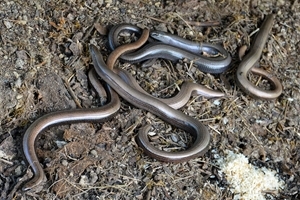By Dr Rufus Sage, Head of Lowland Game Research
 The GWCT Research department recognises the potential for local populations of certain UK reptile species to be affected by released pheasants and partridges. While there is currently little solid evidence of an effect, it is very plausible that pheasants in particular might predate snakes or lizards at certain times of the year.
The GWCT Research department recognises the potential for local populations of certain UK reptile species to be affected by released pheasants and partridges. While there is currently little solid evidence of an effect, it is very plausible that pheasants in particular might predate snakes or lizards at certain times of the year.
Reptiles breed during the summer and hibernate during the winter. Pheasants and partridges are released in mid to late summer, before reptiles initiate hibernation (usually in October), so there is typically a couple of months of overlap in the autumn, when gamebird numbers are at their highest. In spring, while there are far fewer gamebirds around, young or docile reptiles, in particular, may be vulnerable to those remaining birds. As a consequence, GWCT releasing guidelines have, for many years, asked released gamebird managers to consider this when locating gamebird releases in areas where reptiles may occur, for example around ancient woodlands or near to heathland.
There is some ongoing research by the Durrell Institute of Conservation and Ecology at the University of Kent looking into this issue. GWCT research wants to complement this focused and more detailed study with a questionnaire survey of reptile sightings on land with gamebird releases and in other comparable areas without those releases. If predation of certain reptile species by gamebirds is sufficient to deplete local populations, we would expect more reptile sightings on non-release land to be recorded.
We are proposing to ask land managers on the ground, including farmers, gamekeepers and conservation site managers, to record sightings of reptiles during the summer and early autumn. As reptiles are only occasionally seen, sightings will be easy to remember and to record. It is not essential that contributors are able to identify specific species – notes of ‘snake’ or ‘lizard’ will still be useful. Participants will be asked to provide basic habitat information and note down the hours they spend in the field so we can account for these things when comparing sightings between areas. If we can collect data from around 50 release sites and 50 non-release sites, the study should provide a useful insight into reptile activity and potentially identify any meaningful differences between site types.
This project is being generously supported by Sports Mutual.